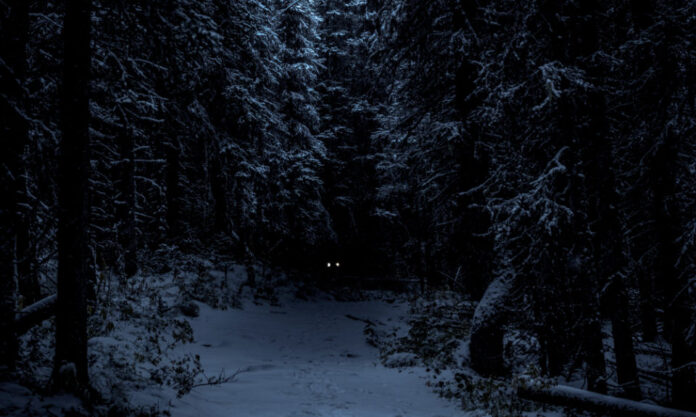For them, our history started approximately 30,000 years ago… In an era where the world was cold, hard to manoeuvre and food even harder to come by. It also didn’t help that at the same time humans were rapidly expanding across the major continents, building up settlements all across the euro-Asia plane, and most importantly of all, competing for the already-limited food sources available. This rise in human activity affected one animal most significantly, one of mankind’s greatest historical rivals; Canis lupus, the grey wolf.
Humans and wolves were born to be mortal enemies.
To understand this rivalry we must go even further back in time. Both lived across moderate climates across plains in the euro-Asia region, both travelled in large groups consisting of many families, both primarily hunted moderately large mammals and both did so through cooperation in outnumbering their prey and ultimately wearing them down with stamina unmatched by any other living fauna.
When humans first arrived in the grey wolf’s territory of the wide euro-Asia plane around 100,000 years ago, the homo-sapien precursors stood a very slim chance against their canine competitors.
Often praised for their extraordinary sense of smell, this was no different 100,000 years ago. Lost your group and can’t find your way out of the woods? Don’t worry, you can always count on a grey wolf’s ability to find its way to you. Most likely they’ll find your lost group too. But they’re not tracking all of you down to be your tour guide through the forest; they’re here to make sure you’ll never find your way out ever again.
Armed with a bite that can pack a 1,200-psi punch, comparable to the modern day hyena, one chomp can exert more than enough force to crush bones like trucks crush soda cans.
But 70,000 years later, human tools had evolved to be more and more deadly. In the era known as the Upper Paleolithic age, marking the latter years of the old stone age, rapid advancements in human engineering saw the use of sharp flakes of stone to craft blades and to better their ranged spears.
The development of the atlatls further increased the range and power with which their spears could be thrown. Some evidence even suggests the first instances of long-distance trading between humans arose around this time, allowing for even better tools to be crafted to maximise defence against predators and efficiency in hunting prey.
On top of this, our close relatives, the more brute-force focused, hack-and-slash style Neanderthals, saw a massive decrease in population; making way for the more tool-centred homo-sapiens to take control.
In the case of our grey wolves, their domestication almost perfectly coincides with this prehistoric era of human development.
After many millennia in a competition they are starting to lose, some factions of wild wolves living near human dwellings decided maybe it was time for a change. It started with just small things; scavenging scraps like vultures, taking advantage of campfires for warmth, gaining some trust among humans by being tamer and less aggressive. From then, more and more wolves found a reliable way of living by depending on human settlements, and over time, humans also found plenty of uses for these more docile canines.
This developing symbiotic relationship saw wolves tracking down prey and guarding food stores for humans, and in return gaining shelter, warmth and free meals everyday.
However these first tamed wolves would have looked nothing like the dogs we know today, and like many other domesticated animals, most likely evolved through a drawn-out process of natural selection and selective breeding. The transformation of the wild Canis lupus into the sub-species, Canis lupus familiaris, the common dog, was affected heavily by humans’ changing needs.
Human settlements trusted less-violent wolves, so more and more of those with shorter snouts, smaller teeth, began breeding with each other to grant their lineage the best chance of survival alongside their two-legged friends.
As human roles in society expanded, so did the preferred attributes for these domesticated canines. Shorter, stockier builds were bred together to better herd livestock; tall, sleeker builds were bred to maximise speed and tracking; big, muscular builds were bred specifically for guard duty. After thousands of years of this selective breeding, wild wolves finally began to show some resemblance to the dog breeds we know today.
The first dog builds similar to those around now began appearing approximately 15,000 years ago. And as we approached the modern era, dogs more and more took on the role of morale-boosting companions rather than hunting partners.
The English Victorian era saw the rise in dog shows, popularising the breeding of distinct types. The parallels between the most popular dog breeds nowadays and those most-widely prioritised 15,000 years ago are uncanny; Collies reflecting the stockier builds of herd dogs, Bloodhounds reflecting the sleek tracking dogs, Bulldogs descending from the muscular lineage previously utilised in guarding humans against threats.
While nowadays we’re probably feeding our dogs better than we feed ourselves, it is interesting to consider that both our ancestors used to fight for their survival against each other over the same food we get so easily today. The greatest rivals are born through their similarities, making them also the best companions for each other, even if that relationship takes many thousands of years to develop.









